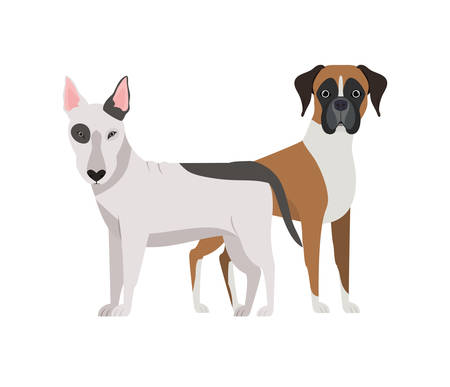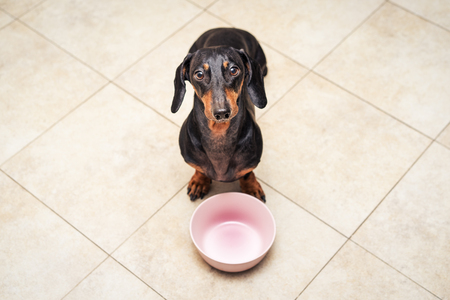Introduction: Why Human Food Can Be Harmful to Dogs
As pet parents, it’s natural to want to share our favorite snacks and meals with our furry friends. However, not everything that’s safe for humans is good for dogs. In fact, some foods that we enjoy can be dangerous—or even deadly—for our pets. This is because dogs and humans have very different bodies and digestive systems.
Understanding the Differences Between Dogs and Humans
One of the main reasons human food can be harmful to dogs is due to physiological differences. Here’s a simple breakdown:
| Aspect | Humans | Dogs |
|---|---|---|
| Digestive System | Longer; designed for a varied omnivorous diet | Shorter; more suited for animal proteins and fats |
| Liver Function | Can process many toxins (like theobromine in chocolate) | Limited ability to break down certain substances |
| Tolerance to Certain Foods | Lactose tolerant (most adults) | Often lactose intolerant after puppyhood |
| Taste Preferences | Sweets, spices, salty foods are common favorites | Less sensitive to sweet flavors; salt requirements are lower |
| Metabolism Speed | Slower metabolic rate overall | Faster metabolism, but sensitive to small amounts of toxins |
The Hidden Dangers in Everyday Foods
Certain ingredients that are staples in American kitchens—like onions, garlic, grapes, or chocolate—are highly toxic to dogs. While we might reach for a chocolate chip cookie or add onions to our burgers without thinking twice, even a small amount of these foods can make a dog very sick. This is why it’s crucial to know which foods are safe and which ones should always stay off your pup’s plate.
2. Common Human Foods That Are Dangerous to Dogs
Many foods that are safe for us can be very dangerous—even deadly—for our dogs. Its important to know which common household foods you should always keep away from your pup. Here’s a closer look at some of the most harmful human foods for dogs:
Chocolate
Chocolate contains theobromine and caffeine, both of which are toxic to dogs. Even small amounts can cause vomiting, diarrhea, rapid breathing, increased heart rate, and seizures. Dark chocolate and baking chocolate are especially dangerous.
Grapes and Raisins
Both grapes and raisins can cause sudden kidney failure in dogs. Even a single grape or raisin can make some dogs very sick. Symptoms include vomiting, lethargy, and loss of appetite.
Onions and Garlic
Onions, garlic, leeks, and chives all belong to the allium family. They contain compounds that can damage a dog’s red blood cells, leading to anemia. Both cooked and raw forms are dangerous.
Avocados
Avocados contain a toxin called persin that can be harmful to dogs in large amounts. While some dogs may tolerate small pieces of avocado flesh, the pit and skin are especially risky due to choking hazards and higher toxin levels.
Xylitol
Xylitol is an artificial sweetener found in sugar-free gum, candies, baked goods, and even some peanut butters. Ingesting xylitol can cause a rapid drop in blood sugar (hypoglycemia), seizures, liver failure, and even death in dogs.
Quick Reference Table: Dangerous Foods for Dogs
| Food | Main Danger | Symptoms in Dogs |
|---|---|---|
| Chocolate | Theobromine & caffeine toxicity | Vomiting, seizures, fast heartbeat |
| Grapes/Raisins | Kidney failure risk | Vomiting, lethargy, loss of appetite |
| Onions/Garlic | Anemia (damaged red blood cells) | Weakness, pale gums, collapse |
| Avocado | Persin toxicity/choking hazard | Upset stomach, difficulty breathing (if pit swallowed) |
| Xylitol | Drops blood sugar/liver failure | Vomiting, loss of coordination, seizures |
If you think your dog has eaten any of these foods, contact your veterinarian or an animal poison control center right away. Remember—when it comes to sharing snacks with your furry friend, its always better to be safe than sorry!

3. Safe Treats: Human Foods Dogs Can Enjoy in Moderation
While many human foods are dangerous for dogs, there are some everyday snacks and kitchen staples that can be shared safely with your furry friend. It’s important to keep treats simple, avoid added seasonings or sauces, and always serve in moderation. Here are a few American favorites you might already have at home:
Dog-Friendly Human Foods
| Food | How to Serve | Benefits |
|---|---|---|
| Plain Cooked Chicken | Boiled or baked, unseasoned, boneless | High in protein, easy to digest |
| Carrots | Raw or cooked, cut into bite-sized pieces | Low calorie, good for teeth, high in fiber and vitamins |
| Apples (without seeds) | Sliced, with core and seeds removed | Source of vitamin C and fiber; helps freshen breath |
| Green Beans | Steamed or raw, plain, cut into small pieces | Low calorie snack, full of vitamins and minerals |
| Pumpkin (plain canned or cooked) | No sugar or spices, served as a spoonful or mixed into food | Aids digestion, gentle on sensitive stomachs |
| Peanut Butter (xylitol-free) | Smooth or crunchy, given as a treat or stuffed in toys | Protein source; great for hiding pills (use sparingly due to calories) |
Tips for Sharing Your Snacks Safely
- Avoid added salt, sugar, spices, and butter.
- Always remove pits, cores, and seeds from fruits.
- Introduce new foods one at a time and watch for allergies.
- Treats should make up less than 10% of your dog’s daily calories.
- If you’re unsure about a food, check with your veterinarian first.
Caution with Portions!
Even safe foods can cause tummy troubles if your dog eats too much. Stick to small portions and use these treats as occasional rewards—not meal replacements.
4. Recognizing Signs of Food Poisoning in Dogs
Common Symptoms to Watch For
If your dog accidentally eats something they shouldnt, its important to know what warning signs to look out for. Some human foods can be toxic to dogs, and early detection of symptoms can help you act quickly and possibly save your pets life.
Typical Symptoms of Food Poisoning in Dogs
| Symptom | Description |
|---|---|
| Vomiting | Your dog may throw up repeatedly or have dry heaves after eating something harmful. |
| Diarrhea | Loose or watery stools are common after ingesting toxic foods. |
| Lethargy | Your dog may seem unusually tired, weak, or uninterested in usual activities. |
| Loss of Appetite | Refusing food or treats is a red flag if it follows possible exposure to harmful foods. |
| Excessive Drooling | Drooling more than normal can signal nausea or irritation from toxins. |
| Tremors or Seizures | Some toxins affect the nervous system and can cause muscle tremors or even seizures. |
| Unsteady Walking (Ataxia) | If your dog appears wobbly or has trouble standing, seek veterinary help immediately. |
| Pale Gums | This can indicate internal bleeding or poor circulation due to poisoning. |
| Abdominal Pain | Your dog may whimper, pace, or guard their belly if theyre feeling pain inside. |
| Increased Thirst or Urination | Certain toxins affect the kidneys, leading to these symptoms. |
When to Call the Vet Immediately
- If your dog is having difficulty breathing, collapses, has seizures, or loses consciousness, seek emergency veterinary care right away.
- If you know or suspect that your dog ate chocolate, grapes, onions, xylitol (a sugar substitute), alcohol, or any medication not prescribed for them, contact your vet even if there are no symptoms yet.
- Dont wait for symptoms to get worse—timely action can make all the difference!
Keep Emergency Numbers Handy:
- Your veterinarian’s phone number
- The nearest 24-hour emergency animal hospital
- The ASPCA Animal Poison Control Center: 888-426-4435
- The Pet Poison Helpline: 855-764-7661
Staying alert to these symptoms and knowing when to act fast can help protect your pup from serious harm if they eat something dangerous at home. Always keep potentially toxic foods out of reach and educate family members about the risks to keep your furry friend safe.
5. Tips for Preventing Accidental Exposure
Keep Human Food Out of Reach
Dogs are naturally curious and have a strong sense of smell, making it easy for them to sniff out food that’s left unattended. To keep your pup safe, always store food in sealed containers or cabinets. Avoid leaving snacks, leftovers, or groceries on countertops or tables where your dog can reach them. Remember, some dogs are expert jumpers and climbers!
Common Places to Store Food Safely
| Location | Why It’s Safe |
|---|---|
| High Cabinets | Out of your dog’s reach, even if they stand up |
| Refrigerator | Keeps food cool and secure behind a closed door |
| Pantry with Door | A closed pantry prevents sneaky pups from getting in |
| Sealed Bins/Containers | Helps keep the smell in and the dog out |
Educate Family Members and Guests
It’s important to make sure everyone in your home knows what foods are dangerous for dogs. Kids, guests, and even visiting relatives may not realize that certain human foods can be harmful. Hang a simple list of unsafe foods on your fridge or pantry as a reminder. Talk with guests when they arrive—especially during holidays or parties—so they know not to feed your dog table scraps.
Unsafe Foods List Example (Hang This Up!)
- Chocolate (all types)
- Grapes & Raisins
- Onions & Garlic
- Xylitol (in sugar-free gum/candy)
- Cooked Bones
- Alcohol & Caffeine Drinks
- Nuts (macadamia, walnuts)
- Dairy (some dogs are lactose intolerant)
Choose Dog-Safe Alternatives for Treats
If you want to treat your dog during family meals or gatherings, give them something made just for dogs! There are plenty of healthy options available at pet stores, or you can offer safe fruits and veggies like baby carrots or apple slices (without seeds). This way, your furry friend feels included without risking their health.
Dog-Safe Snack Ideas Table
| Treat Type | Description/Notes |
|---|---|
| Commercial Dog Treats | Designed specifically for canine nutrition and safety |
| Baby Carrots | Crunchy and low-calorie; great for teeth! |
| Apple Slices (no seeds) | Sliced thin; avoid core/seeds which are toxic to dogs |
| Pumpkin Puree (plain) | A spoonful is tasty and good for digestion—avoid pumpkin pie mix! |
| Cucumbers/Zucchini Slices | A hydrating, crunchy treat many dogs enjoy |
| Baked Sweet Potato Chunks (no seasoning) | Mild flavor and easy to digest; no salt or spices needed |
The best way to protect your dog is by staying aware and making sure everyone around you knows how important it is to keep harmful foods away from your furry friend. With a little extra care, you can keep mealtime fun—and safe—for everyone in the family!


